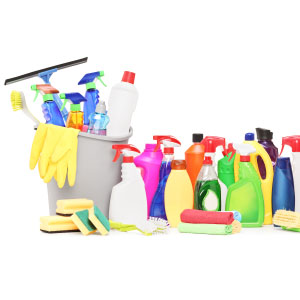Using DIY or home-made cleaning products.
At a time when many people are looking to make small economies, it makes perfect sense to consider cutting costs by using home-made cleaning products and the internet and social media seem to be full of tips.
However, there may be certain cleaning situations in which a home-made solution could cause a problem the area being cleaned so it’s worth finding out the potential effects before going ahead.
Laundry detergent is quite often suggested for cleaning carpets or rugs, but really, the chemicals in some of them are quite different from the ones specifically designed for cleaning carpets. Potentially, this could damage the pile and leave a residue that may end up collecting more grime.
Another common home-cleaning solution is vinegar – often mixed with bicarbonate of soda – and it can be a great alternative to stronger chemicals. But of course, vinegar is an acid and bicarbonate of soda is an alkaline so with vinegar you need to know what you can use it on.
There’s no doubt that because vinegar is mildly acidic, it can clean grime away efficiently, but if you clean wooden floors or natural stone with it, even diluted, it can make them look dull by wearing away at the surface. The same goes for lemon juice which, like vinegar, is an acid and over time could have the same potentially damaging effect.
Something else to avoid is mixing chemicals when you don’t know what the effects might be. For example, mixing products containing bleach with products containing ammonia can release dangerous toxic fumes so be very careful when you’re cleaning with them and always check the labels.
Bleach (a corrosive alkaline) has been used as an efficient and versatile cleaner for many years whether neat or diluted but be wary when it comes to tiles and grout. It works in the short term but over time it can damage both and make them more susceptible to mould and dirt.
If you are going to use bleach for cleaning, read the label, dilute as directed, make sure it’s appropriate for the cleaning task in hand, and remember to rinse away the residue.
So, if you want to try DIY cleaning products, do a spot test first and start with the gentlest, safest approach. Don’t take any risks and read the labels. If in doubt, it’s probably best to get a dedicated product – and there are plenty of eco-friendly ones available – which has been designed to do exactly what you want it to do, safely.
And of course, there’s always the option of a reliable, professional cleaning company who know exactly what they’re doing and will get the job done safely and to a high level.
The post Cleaning Hacks to avoid appeared first on SMCleanNW.
This content was originally published here.

